Series of wooden mermaids
Ornamental mermaids, to be used as interior decoration.
Founded in 2003, woodworking company Heartwood Carving in Eugene, Oregon (USA) has specialized in creating carved parts in wood: nearly any project from simple to complex, in nearly all styles, sizes and applications. Their website shows an amazing variety of carvings.These products have been created using advanced CAD/CAM technology, and from the start of the company DeskProto (in 2003 it was DeskProto Version 3) has been an important tool for Heartwood.
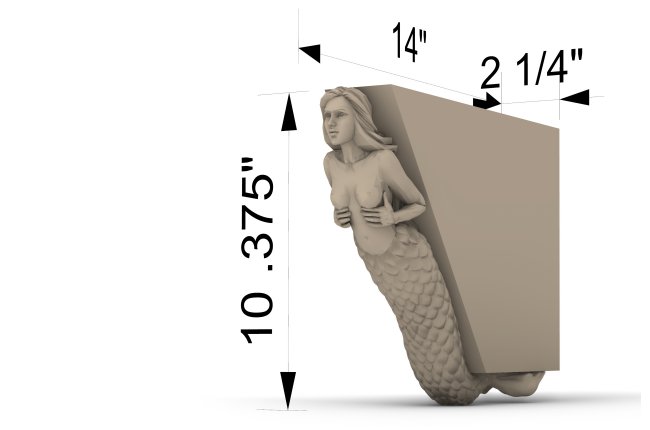
The final CAD model of the mermaid to be created.
In addition to Heartwood Carving's large catalog of decorative wood items, many custom projects are created based on photos, drawings or reproduction samples. For this project the client wanted naturalistic mermaids to wrap the front edge of architectural beams in a restaurant.
A purchased 3D model was modified to fit the size, pose and angle specified for the project. Additional computer modeling tools were used to add scales to the tail. The screenshot above (made in Rhino 7) shows the final CAD model.
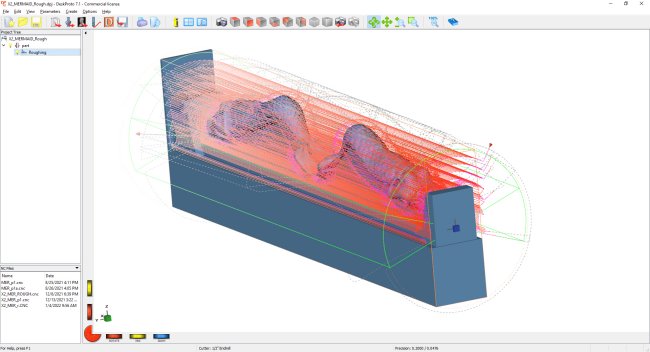
Roughing was done using rotary toolpaths (continuous rotation)
Using DeskProto, Heartwood is able to create efficient toolpaths on complex shapes.
Roughing was done using rotary machining (continuous rotation). Heartwood states: "The newest update (DeskProto Version 7.1) allows definition of the material as a block instead of a cylinder, which is especially helpful in saving machine time on the roughout".
The screenshot above clearly shows the roughing layers (passes), and also that only the rectangular block is machined. The area to be machined has been limited to about 220 degrees, as the backside of the mermaid did not need to be machined. The small dark blue cube shows the workpiece zero point: located on the rotation axis, with the X=0 at the end of the block. Toolpaths can go below Z=0 if needed for this model.
Find out more about rotary machining with DeskProto in our Rotary tutorial videos.
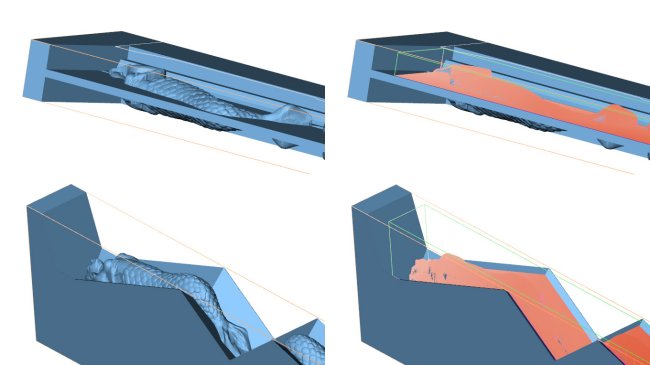
Toolpaths for indexed machining, made using two STL files.
Finishing was done using indexed machining: applying 3-axis toolpaths from several sides (in this project three sides). Heartwood states: "The accuracy of the program allowed for precision matching of the three single side carvings of the finish passes."
Heartwood prefers to create special versions of the geometry STL file for each side, in order to have full control over how far the toolpaths for each side will extend and/or overlap. In contrast, the DeskProto wizard for indexed machining (named "Two or mode sides, automatic rotation") will use the same STL file for al sides and rotate it to get the correct side facing upwards.
Find out more about indexed machining with DeskProto in our Indexed tutorial video.
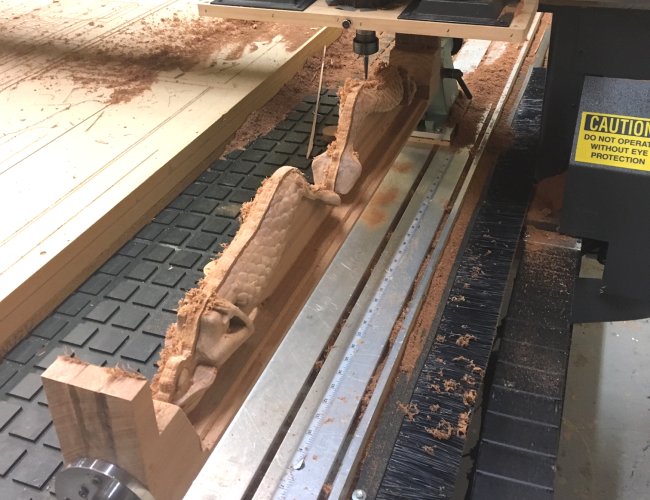
Finishing the front side on a MultiCam machine.
The first pair of mermaids has been machined on a MultiCam MG Series router. This machine is large enough to machine two mermaids from one long block of wood, so production has been done in pairs. These are laminated blocks of Sapele wood, a type of wood that is similar to Mahogany.
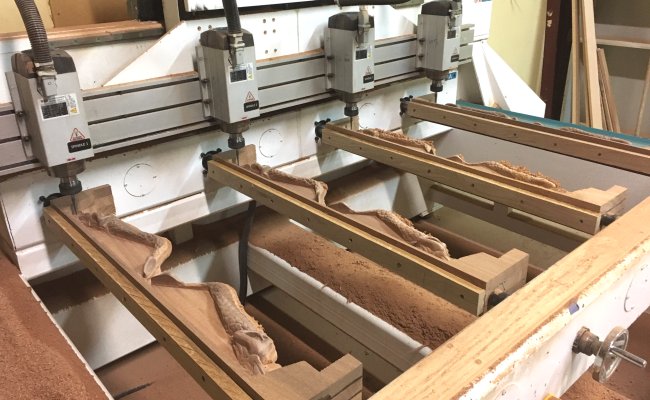
This Weihong machine can machine four identical rotary parts at the same time.
The balance of the order was completed on a 4-Head ULI machine with a Weihong controller.
Rouging and finishing were done using two different cutters: a 1/2" endmill for roughing and a 1.5mm tapered ball for finishing. These tapered ball cutters are great tools, as they combine stability with a smalle ballnose for small details in the part.
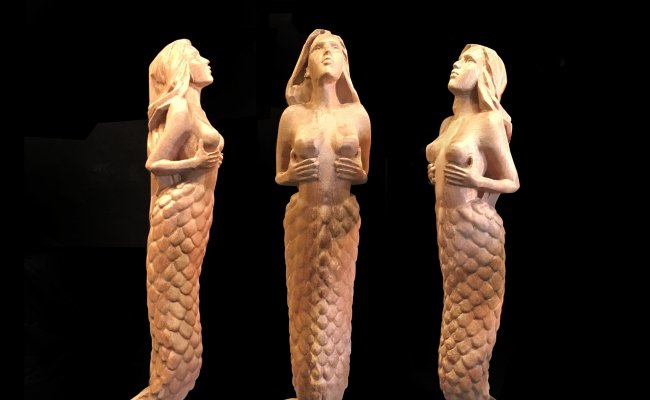
Three of the resulting mermaid models.
Heartwood states: "The final products were removed from the supporting material by bandsaw, and then sanded with 120 grit and Dremel tools."
The finishing toolpaths for the three sides have perfectly merged: you cannot see any transition between area machined from the side and area machined from the front. That means that the machine is perfectly accurate, and that the workpiece zero point has been set with the zero point exactly on the rotation axis.
The restaurant can look forward to receiving a set of striking decorations !






